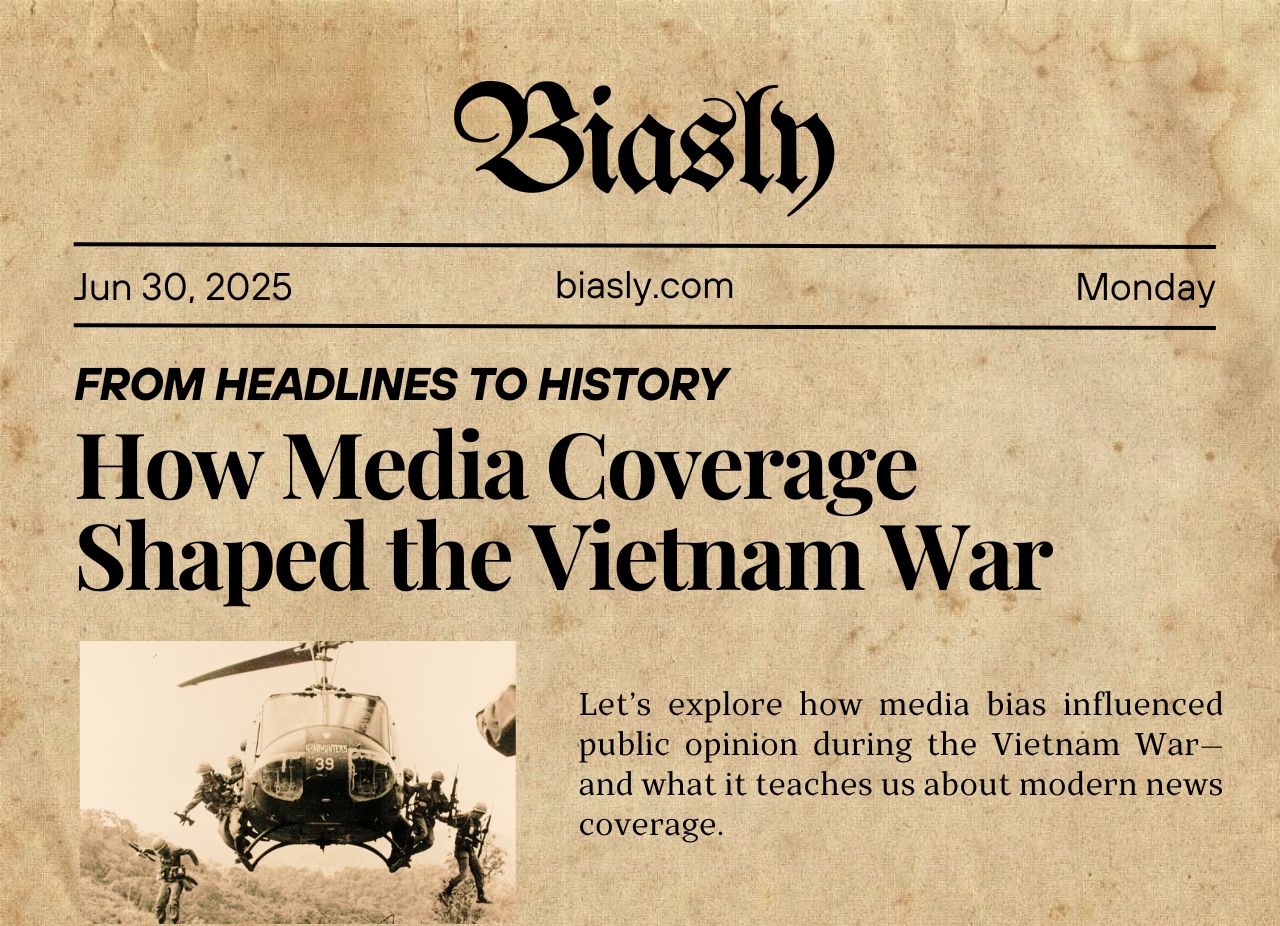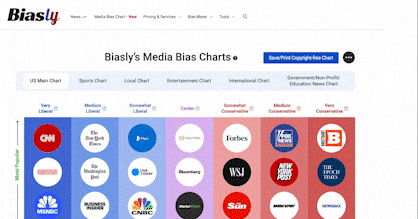
The Vietnam War, once a war with vast approval from Congress and the people. Now it is widely considered one of the most significant foreign policy disasters in U.S. history. 58,000 American troops were lost, and hundreds of thousands to millions of Vietnamese civilians were estimated to have lost their lives.
The Vietnam War reshaped public perception of the military and foreign policy in America. But how did the media’s positive and negative coverage influence the course of the war?
While there was no unified media coverage of the war, coverage tended to be one-sided. Rather than taking a neutral stance, mainstream news was overly partisan and differential towards the war. The media shifted from a largely positive coverage of the war that critics argue manufactured consent to a largely negative view.
As more information about the war’s casualties, methods, and effectiveness emerged, coverage grew more critical. Not only did the media coverage shift throughout the war, but it also impacted the war, turning public opinion and putting pressure on U.S. leadership. How did the media’s coverage of the Vietnam War change and affect the war itself?
How News Media Framed the Early Years of the Vietnam War
While not unanimous, the media coverage of the Vietnam War was largely positive. After the Gulf of Tonkin incident, the government portrayed the North Vietnamese as a threat to the United States. Military intervention was deemed a necessary action. Given the near-unanimous approval of the war in Congress and broad public approval, the media initially was not very critical of the war.
The media coverage often presented the U.S. actions as liberation and noble, necessary to stop a dangerous threat and help free Vietnam from the North. We can see a clear example of media bias in how mainstream outlets covered the Vietnam War—often framing U.S. involvement as justified and necessary, thereby supporting the war narrative. Yet, not all media coverage was favorable. While some who supported the war argued the media’s negative coverage harmed America by pushing for an end to the war, most media coverage was favorable until 1968.
“Many experts who have studied the role of the media have concluded that before 1968, most reporting was supportive of the U.S effort in Vietnam.”– Vietnam War Britannica
The media coverage from the radio, television, and newspapers differed. The Vietnam War differed from other wars because it was the first “TV war,” with footage from the frontlines available in real-time to the public.
- Television allowed people to see war footage every morning
- Newspapers provided longer-form, more nuanced commentary
- Radio broadcasts provided more conversational coverage of the war
While the media coverage initially started positively, that did not mean that the public or even the media were in unanimous agreement. Protests were rampant around the country and on college campuses, which were frequently smeared as extremist by the government and much of the media. Negative media coverage of the anti-war movement helped increase consent for the war by portraying protestors as unreasonable college kids or political extremists.
By contrast, while the media did have a largely positive view of the war, there were questions about its implementation from the beginning. Some more left-leaning sources initially had mixed or critical coverage of the war, and some right-leaning sources bashed LBJ’s execution of the invasion.
Tet Offensive and Vietnam War Television Coverage: The Turning Point in Media Sentiment (1968-1971)
While the coverage of the Vietnam War started largely positive, coverage gradually shifted to negative from 1964-1968 and only increased from there. While actual military involvement began in 1955, coverage didn’t pick up until the vast escalation post-Gulf of Tonkin incident. As the public sympathies shifted from broadly pro to anti-war, so did the media.
However, the extent to which the media influenced the public or vice versa is unknown. TV coverage of battles and first-hand reporting of the war, with more than 600 international reporters in Indochina for the war, shifted sympathies. Scholars widely considered the turning point for media coverage to be the Tet Offensive, a devastating invasion by the North Vietnamese.
The Tet Offensive led to a once supportive media to turn critical and scathing of the years-long war. CBS reporter Walter Cronike, often considered the most trusted reporter in America, said the war was “mired in stalemate.” Walter’s comment was what many in the media and Congress considered the turning point for the media coverage of Vietnam, due to the fact that LBJ himself said, “If I’ve lost Cronike, I’ve lost Middle America.”
What caused both the media and the people to turn on the war effort more than anything was the sheer number of American casualties.
“What most undermined the support for the war was simply the level of American casualties: the greater the increase in casualties, the lower the level of public support for the war.” –Vietnam War Britannica.
As the media coverage grew more critical, so did the population, though media coverage reflected public opinion more than it influenced it. Media coverage of the Vietnam War hit peak negativity with the release of the 1971 Pentagon Papers, which revealed the extent of deception regarding the Vietnam War.
The Pentagon Papers showed that the White House had lied to Congress about the war. Specifically, that LBJ and Nixon were aware the war was unwinnable, and revealed secret carpet bombing campaigns in neutral countries. The Pentagon Papers, which the Nixon administration attempted to discredit, vastly increased the already great resentment and opposition to the war by the media and public.
What had once been a war broadly supported by the media turned into a war opposed by most of its reporting as public opinion shifted. The narrative of a “TV war,” once a novel and exciting media concept, had become deeply horrifying to the population. There was wall-to-wall coverage of events such as the Mai Lai Massacre, with TV, radio, and newspapers condemning the war. Negative coverage, as well as focus on civilian casualties and war crimes, reflected America’s turn against an initially supported war.
Vietnam War Journalism Impact: How Battlefield Reporting Changed American War Coverage Forever
The takeaways of the Vietnam War are multifaceted and rather nuanced. From a purely technical perspective, it was the first war that could be seen broadcast on TV in near real-time. The average person could see war footage broadcast on mainstream news daily, with a closer and more accurate perspective towards an ongoing war than ever before.
At the time, however, tools like Biasly’s Bias Meter did not exist—tools that today help identify political bias and reliability in news articles. Without such resources, the public was left with few ways to detect partisan leanings in media coverage, making it easier for biased narratives to shape public opinion unchecked.
While a feature of several previous wars, Newsradio had more up-to-date and widespread analysis than ever. Newspapers would provide a deeper and more long-form analysis of the current fighting events while updating readers daily. Yet perhaps a bigger takeaway is what lessons need to be learned by the shifting perspectives over time. This is where the importance of media literacy education becomes crucial—it empowers individuals to separate fact from bias, critically analyze narratives, and form a more informed understanding of events like the Vietnam War.
The media coverage of the Vietnam War has received lengthy criticism for being overly favorable towards the war for the first several years. There was very little media skepticism about the Gulf of Tonkin incident, which sparked the heavy escalation for war. Years later, we learned that the official story about the Tonkin incident was not entirely accurate. This is where the importance of media literacy education comes into play—it empowers individuals to separate fact from bias, critically analyze narratives, and form a more informed understanding of events like the Vietnam War.
For another, the negative portrayal of protestors as violent, extremists, or naive college kids while being overly dismissive of the very real arguments the protestors had. One could argue that mainstream news media mistakes were repeated in other wars, such as the Iraq War. The media was largely positive towards the Iraq War at the beginning, initially did not question the WMD narrative, and reporters negatively covered protestors. Similar patterns of media bias have been observed in coverage of ongoing geopolitical issues, including the Israel-Palestine conflict, where narratives are often shaped by framing choices and selective reporting.
There are some critiques from the minority of those who still support the Vietnam War, and that the media coverage turned the population against it. Those who feel this way argue that an overly critical view of the war caused an unwarranted decrease in support. Others argue that the media got overly cautious after being mistaken about Vietnam and are excessively wary of military intervention.
Perhaps a more bipartisan, agreed-upon, and neutral takeaway is that the news can shift its coverage of an event over time toward the widespread consensus or shape a popular consensus. Being able to watch war footage daily while being informed through television changes public perception of combat. As society advances, increases in technology mean the news will cover every major conflict differently.
To reduce the influence of bias in future news coverage, it’s essential to evaluate the reliability and partisanship levels of news sources. Biasly helps users do exactly that through several powerful tools. Our Bias Meter provides article-level bias ratings using advanced AI and human analysis to assess political leanings, sentiment, and reliability. With Biasly’s Media Bias Checker, users can compare sources like AP News, which generally demonstrate lower partisanship, to more extreme outlets like Infowars. These tools empower readers to better understand media narratives and make informed decisions about the news they consume.
With the current technology the average American has now, almost anyone can turn on their phone and see the horrors of war daily. As technology increases, the news covers every war differently, and the reporting can shift rapidly.
The Vietnam War was unique at the time because of the ability to turn on the television and see what was happening every morning, a novel concept now. Despite these profound changes in technology and the availability of reporting, media mistakes frequently repeat.
Conclusion: Reflections on Vietnam War Journalism and Its Relevance Today
While some might argue that analyzing news coverage of the Vietnam War is unnecessary, learning from the past can be a powerful tool. Through learning about the news coverage of the Vietnam War, we can learn about how technology changes news coverage, how narratives can shift over time, and how to avoid future mistakes.
The Vietnam War reporting may be long in the past, yet its lessons can teach valuable lessons for the future. With today’s constant digital access to images and footage from war zones, it’s easy to forget that the Vietnam War was one of the first conflicts brought directly into people’s living rooms through television. Without reflecting on how the media covered that war—often with limited scrutiny and noticeable bias—there’s a risk that similar missteps in reporting could be repeated in future conflicts.


























